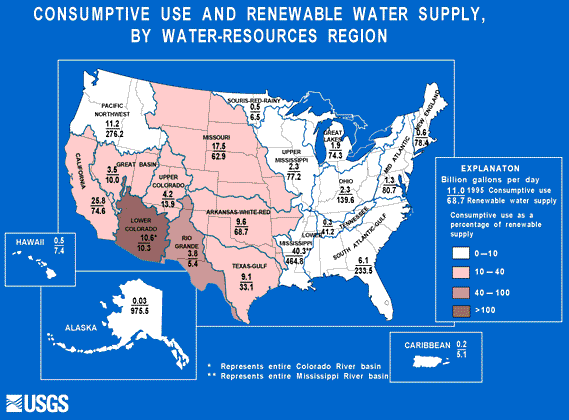| |

Comparisons of average consumptive use and renewable water supply for the 21 water-resources regions of the United States, Puerto Rico, and U.S. Virgin Islands(U.S. Geological Survey, 1984; updated using 1995 estimates of water use) The renewable water supply is the sum of precipitation and imports of water, minus the water not available for use through natural evapotranspiration and exports. Renewable water supply is a simplified upper limit to the amount of water consumption that could occur in a region on a sustained basis. Requirements to maintain minimum flows in streams leaving the region for navigation, hydropower, fish, and other instream uses limit the amount of the renewable supply available for use. Also, total development of a surface-water supply is never possible because of increasing evaporative losses as more reservoirs are used. Nevertheless, the renewable supply compared to consumptive use is an index of the degree to which the resource has already been developed.
Reference:
USGS Water Use in
the United States
Last updated 15:01:23 Mon 30 Sep 2002
USGS Privacy Statement | Disclaimer |